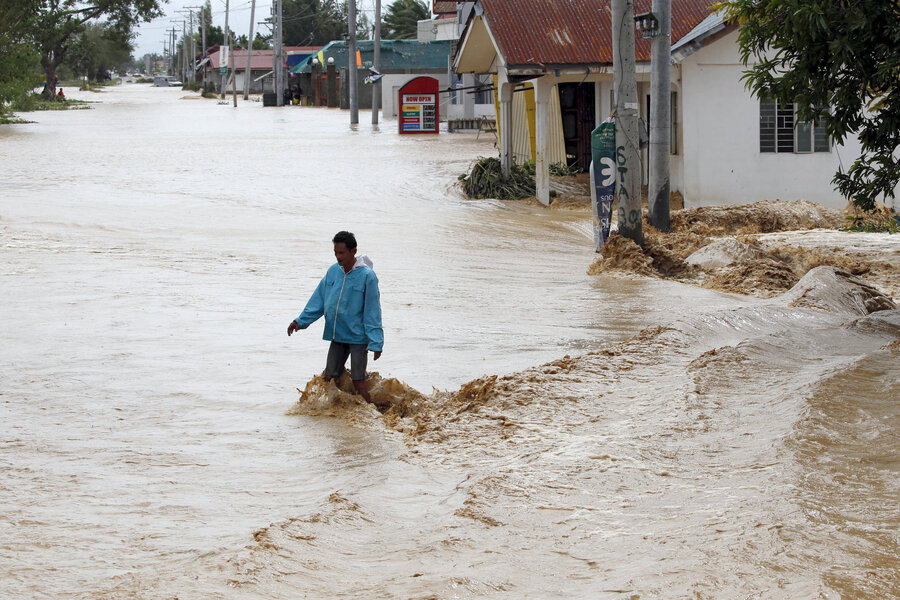11 dead after Typhoon Koppu slams into Philippines
Loading...
| Cabanatuan, Philippines
Army, police and civilian volunteers rushed Monday to rescue hundreds of villagers trapped in their flooded homes and on rooftops in a northern Philippine province battered by slow-moving Typhoon Koppu, officials said.
The typhoon blew ashore into northeastern Aurora province early Sunday, leaving at least 11 dead, forcing more than 65,000 villagers from their homes, and leaving nine provinces without electricity. By Monday afternoon, Koppu had weakened into a tropical storm over Ilocos Norte province with winds of 65 miles per hour and gusts of up to 84 mph.
Several of the affected provinces, led by Nueva Ecija, were inundated by floods that swelled rivers and cascaded down mountains, trapping villagers in their homes, said Nigel Lontoc of the Office of Civil Defense.
"There were people who got trapped by the flood on their roofs, some were rescued already," Vice Mayor Henry Velarde of Nueva Ecija's Jaen town told The Associated Press by telephone, adding that about 80 percent of 27 villages in his farming town of more than 45,000 people were inundated by flood.
When a flooded river swamped the villages, residents scrambled to safety but many failed to save their poultry and farm animals. Out of more than 5,000 ducks, for example, only about 1,000 were saved and many rice crops ready to be harvested in a few weeks turned into a muddy waste, he said.
"Our rice farms looked like it was ran over by a giant flat iron," Velarde said. "All the rice stalks were flattened in one direction."
Hundreds of soldiers, police and volunteers have converged on Nueva Ecija, a landlocked, rice-growing province in the heart of Luzon island, to help villagers whose homes had been flooded, said Lontoc.
Erwin Jacinto, a 37-year-old resident of Nueva Ecija's Santa Rosa town, said the flooding turned his farmland into "nothing but mud."
Jacinto spoke from atop a high bridge where dozens of farmers stayed in the open overnight with their families, and their pigs, goats and chickens.
At least 11 people have died. One man was buried by a landslide while checking his farm on Sunday in the mountain town of Bakun in Benguet province. Two men drowned in Nueva Ecija, while a 14-year-old boy was killed when a tree branch fell on his family's shanty in suburban Quezon city in metropolitan Manila.
Seven people died when a passenger motorboat capsized in bad weather in the central Philippines, but the government's disaster-response agency has not included the deaths in the typhoon toll because the central region was not directly affected by the storm.
President Benigno Aquino III, who flew to Nueva Ecija to check the flooding and distribute food packs in an emergency shelter, said the typhoon's unusually slow speed allowed it to batter the north for about three days instead of just a few hours.
Rain dumped by the typhoon in the north may rampage through rivers late Monday to Tuesday and put at risk about 800 downstream villages, where residents have been urged not to return home. "They think it is safe already to go back to their communities but we are preventing them right now," Aquino told reporters.
Koppu, Japanese for "cup," is the 12th storm this year to hit the Philippines, which averages 20 storms and typhoons each year.
In 2013, Typhoon Haiyan leveled entire towns in the central Philippines and left more than 7,300 people dead or missing.







